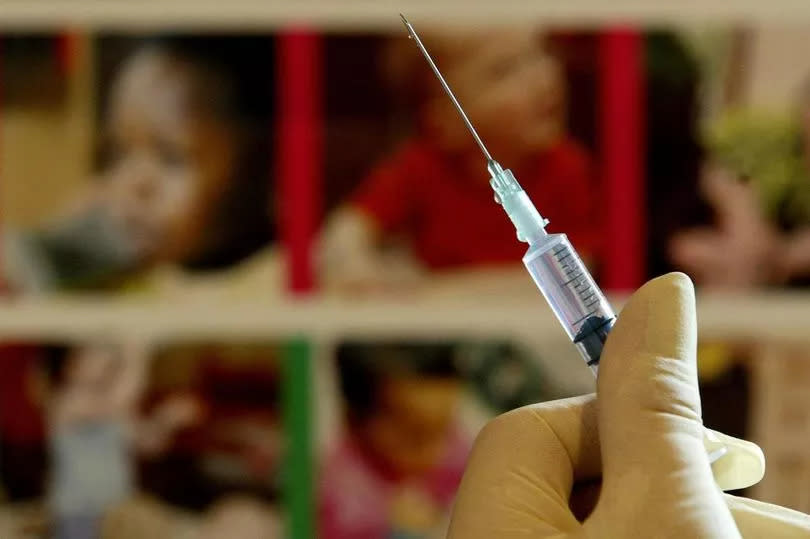Yorkshire vaccination plea amid 'worst whooping cough outbreak in 40 years'

Across Yorkshire, the vaccination rate for whooping cough has plummeted while cases surge across the country. The news comes as five infant deaths were attributed to whooping cough - in potentially the worst outbreak in 40 years.
According to the UK Health and Security Agency (UKHSA), cases are three times higher in 2024 than they were in 2023. Suspected infections from April 29 to May 5, 2024, reveal 91 cases in Yorkshire and The Humber.
So quite worryingly, only 31 areas nationwide met the 95% UKHSA vaccination target while in Yorkshire, only two areas met the target. One of these was Barnsley, which saw a 96.2% vaccination rate, although this had fallen from 97.6% a decade earlier. York also met its target, with 96.6% vaccinated.
However, the majority of Yorkshire missed the target, with some missing by a wide area. Leeds had the worst vaccination rate in the county, with only 88.3% vaccinated, a massive drop from 96.3% a decade ago. Bradford only saw 89.7% vaccinated, compared with 96.3% a decade earlier.
Now, Professor Sir Andrew Pollard, consultant paediatrician and chairman of the Joint Committee on Vaccination and Immunisation told the BBC Radio 4 Today programmed the drop in vaccination rates was putting "the most vulnerable – those who are too young to have been vaccinated – at greatest risk".
He said the "only thing we can actually do" about rising cases is to ensure higher vaccination rates. He warned: "The troubling thing is that if we continue to have high rates of spread and low rates of vaccination, there will be more babies severely affected and sadly there will be more deaths."
Meanwhile, the UKHSA has confirmed the death of five babies in England after being diagnosed with whooping cough. In the year leading up to April 21, nationally a total of 9,575 suspected cases of whooping cough were reported.
Not all of these have been confirmed, as the UKHSA adds there is a total of 2,793 confirmed cases in the three months leading up to March. In the whole of 2023, there were only 858 cases, while March alone was 1,319 cases reported.
As well as young children, pregnant women are also eligible for the whooping cough vaccine and 59.3% did so in the England between October and December 2023. This is down almost 16% compared with the same period in 2016.
Get all the latest and breaking news in Yorkshire by signing up to our newsletter here.
Sir Andrew said: "Very importantly, for this very vulnerable group, those who are too young to be vaccinated, is the vaccination rates in pregnant women.
"Very worryingly, those have fallen from a peak of about 75% of women being vaccinated during pregnancy to under 60% today, and that’s what puts these very young infants at particular risk."
Professor Sir Stephen Powis, national medical director for the NHS in England, said: "With cases of whooping cough continuing to rise sharply across the country, and today’s figures sadly showing five infant deaths, it is vital that families come forward to get the protection they need.
"If you are pregnant and have not been vaccinated yet, or your child is not up-to-date with whooping cough or other routine vaccinations, please contact your GP as soon as possible, and if you or your child show symptoms ask for an urgent GP appointment or get help from NHS 111."
Here is the vaccination rate for each area in Yorkshire, compared with the year before and a the rate a decade before. You can also find the total number of cases in each area below.
Barnsley: 96.2% rate, compared with 96.3% a year ago and 97.6% a decade ago with 32 cases
Bradford: 89.7% rate compared with 88.6% last year and 96.1% a decade ago with 108 cases
Calderdale: 91.2% rate compared with 92.2% the year before and 97.6% a decade ago with 25 cases
Doncaster: 91.8% rate compared with 93.1% the year before and 95.9% a decade ago with 29 cases
Kirklees: 92% rate compared with 92.8% the year before and 97.5% a decade ago with 30 cases
Leeds: 88.3% rate compared with 88.5% the year before and 96.3% a decade ago with 144 cases
North Yorkshire: 95.2% rate compared with 94.3% the year before
Rotherham: 95.7% rate compared with 95% the year before and 96.6% a decade ago with 40 cases
Sheffield: 91.9% rate compared with 91.8% the year before and 93.8% a decade ago with 131 cases
Wakefield: 94.9% rate compared with 94.1% the year before and 97.9% a decade ago with 75 cases
York: 96.6% rate compared with 91.8% the year before and 52 cases

 Yahoo News
Yahoo News 
